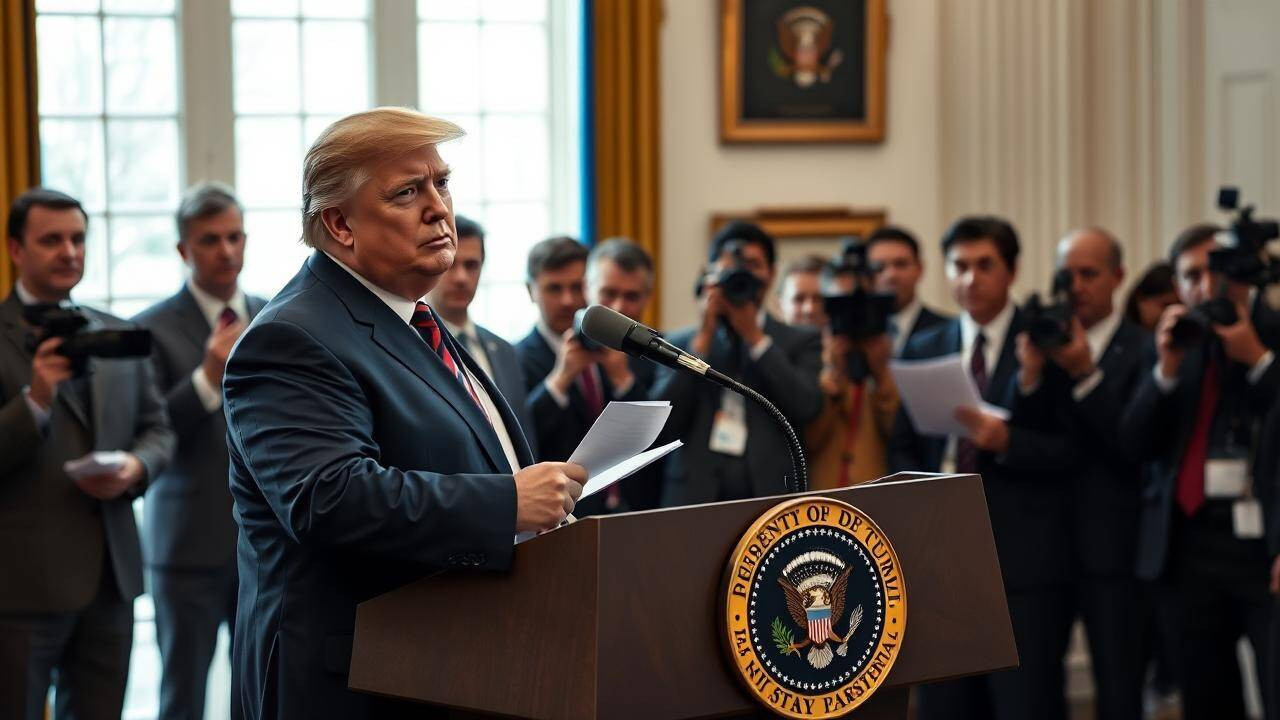President Trump declared a 50% tariff on copper imports and hinted at a potential 200% tariff on pharmaceuticals. This pharmaceutical tariff would have a grace period of one to one and a half years for companies to relocate operations to the US.
Navigating the Choppy Waters: Could New US Tariffs Be on the Horizon?
The winds of global trade are swirling again, and a familiar figure is at the helm. Former President Donald Trump has recently hinted at the potential implementation of significant new tariffs should he return to office. The commodities market, especially those dealing in copper, and the pharmaceutical industry are now bracing for what could be a seismic shift.
The specifics, as always, are where things get interesting. Trump reportedly suggested tariffs as high as 50% on imported copper. Such a move would undoubtedly send ripples throughout the manufacturing sector, impacting everything from construction to electric vehicles. Imagine the price hikes on wiring, plumbing, and even the circuits in our smartphones. It’s a domino effect that could touch nearly every facet of modern life.
<img src="image-of-copper-wires.jpg" alt="Close-up of copper wires showcasing the potential impact of a 50% tariff on copper imports.” />
And the pharmaceuticals? He’s talking about even steeper tariffs, potentially reaching a staggering 200%. The rationale, according to Trump, is to incentivize domestic production and, perhaps, to exert leverage in international negotiations. But the potential consequences for consumers are undeniable. Would this lead to lower drug prices, or would it create a surge in prices due to decreased competition and higher costs for essential medications? It’s a question hanging heavy in the air.
Why Now and What’s the Rationale Behind Possible Tariff Increases?
The motivation behind these proposed tariffs, at least on the surface, seems rooted in the familiar themes of “America First” and bolstering domestic industries. Trump has consistently advocated for policies aimed at bringing manufacturing jobs back to the United States and reducing reliance on foreign supply chains. Slapping hefty tariffs on imported goods, the argument goes, would make American-made products more competitive and encourage companies to invest in domestic production.
However, the complexities of global trade are rarely so straightforward. While boosting domestic manufacturing sounds appealing, tariffs can also lead to retaliatory measures from other countries, sparking trade wars that ultimately harm everyone involved. They can also increase costs for businesses that rely on imported raw materials or components, potentially leading to job losses and reduced economic growth.
Furthermore, the proposed tariffs on pharmaceuticals raise serious concerns about access to affordable healthcare. The U.S. already has some of the highest drug prices in the world, and tariffs could exacerbate this problem, potentially putting life-saving medications out of reach for many Americans.
Consider the potential chain reaction. A 50% tariff on imported copper would immediately impact industries that depend on it. Manufacturers of electronics, automobiles, and construction materials would face higher costs, which they might pass on to consumers. This could lead to inflation and reduced demand, ultimately hurting the very industries the tariffs were intended to protect.
Navigating the Uncertainty: What Could These Tariffs Mean for the Future?
The potential implications of these tariffs are far-reaching and multifaceted. Beyond the immediate economic impact, they could also reshape global trade relationships and alter the dynamics of international politics.
For the copper market, a 50% tariff could lead to a significant shift in supply chains. Companies might be forced to seek alternative sources of copper, potentially from countries with less stringent environmental regulations or labor standards. This could have unintended consequences for sustainability and ethical sourcing.
For the pharmaceutical industry, the stakes are even higher. A 200% tariff could disrupt the global supply of essential medicines and lead to shortages, particularly for generic drugs that are often sourced from overseas. This could have devastating consequences for patients who rely on these medications to manage chronic conditions or treat life-threatening illnesses.
The coming months will be crucial in determining whether these tariffs become a reality. The debate surrounding them will likely be fierce, with businesses, consumers, and policymakers weighing the potential benefits against the risks.
Ultimately, the decision of whether to impose these tariffs will depend on a complex interplay of economic, political, and strategic considerations. And, regardless of the outcome, it will undoubtedly have a lasting impact on the global landscape. For related insights, consider reading our analysis on the potential impacts of reshoring initiatives.
In conclusion, the prospect of new US tariffs, especially on commodities like copper and within the pharmaceutical sector, presents a significant challenge to businesses and consumers alike. Careful consideration of the potential ramifications is paramount, and businesses must prepare for a period of uncertainty.







